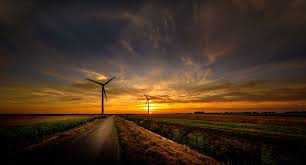Can windmills be the future to home electricity?
Grade 6
Presentation
No video provided
Problem
This is a list of some challenge that you could face is we put windmill in individual households:
- Wind: There may not be enough wind in urban areas to power the windmills due to the environment and buildings that block of most wind. While in rural areas are more vast and open.
- Apperance: Although windmills would be beneficial financially and economically many people do not like the look of windmills, I think people will adapt to the look of the windmills. And the long term effects are not only beneficial to you but the environment, by producing very minimal CO2 windmills do not harm species or pollute waters.
- Harm species: Windmills usually kill animals like birds and bats, killing 186,429,559 bird in Canada per year and 500,000 bats across Canada and USA. Now imagine having windmills everywhere this means more animals will be harmed.
- Noise: Though windmills don't make a lot of noise having a neighborhood full of them will produce more noise which can be downright annoying when your trying to sleep especially if you have sensitive ears. People tend to say that living near windmill can cause dizziness, nausea, the sensation of ear pressure, sleeping disorders, headaches and other symptoms. But it has not been scientifically proven or confirmed. Even when you wear earplugs or earphones they do not prevent the low frequency sound from getting in ear.
- Space: Space is a major challenge because it depends on the house type. With more and more people moving to Calgary housing plots are becoming smaller so it will depend on the size of the windmill.
Method
Hypothesis:
I think that in the future it might be possible for people to generate power in their homes through a wind turbine. Therefore helping the environment and saving you money.
Windmill 🆚 Wind turbine:
Windmill usually don't produce electricity and were more used in the past for grinding and pumping water, while wind turbines are more modern and a strictly for electricity.
Research
Information:
A windmill would need to produce 10,469 kilo-wats of electricity per year to power a house and that a small windmill can produce 20-400 kilowatts per year (depends on size) so a small windmill cannot power a house.So instead of the windmill powering a house it could either power your most energy consuming appliance (heating and cooling) or use the 1,752 kilowatts to bring down your energy bill. Heating and cooling uses about 5,000 kilowatts which is almost half of your total energy bill per year so again it can not produce enough electricity. But a small windmill can reduce your energy bill by 50-90% which can save you about $8,000 per year. Since an average small windmill costs $3,000-11,000 you would make a profit at around 2 years. How many kilowatts of electricity you get all dependson your wind speed and location because wind speeds constantly change windmills usually use 35%-65% of their maximum capacity.
Data
-Wind is the second most important renewable energy source in Canada. Is accounts for 3.5% of electricity in Canada.
-While in the USA wind is the top renewable energy source. Providing 10.1% of their nation's electricity
-Cost of wind turbines could drop by 40% in the next decade this mean windmills will become more popular in demand worldwid.
Conclusion
In the end I found out that a smaller windmill cannot power a house but it can reduce your energy bill by 50-90%. In the future windmills may get smaller and generate more energy,
Citations
Sources Used:
https://www.energysage.com/about-clean-energy/wind/small-wind-turbines-overview/
https://windexchange.energy.gov/small-wind-guidebook
https://windexchange.energy.gov/small-wind-guidebook#intro
https://www.visualcapitalist.com/visualizing-the-worlds-biggest-wind-turbines/
https://www.ontario.ca/page/electricity-generation-using-small-wind-turbines-home-or-farm-use
https://energy.techno-science.ca/en/energy101/wind.php
https://weatherguardwind.com/how-much-does-wind-turbine-cost-worth-it/
Acknowledgement
I would like to thank my family for I'll their help, support and feedback that help me through this project. Also to my science fair coordinator for helping when I had questions.

